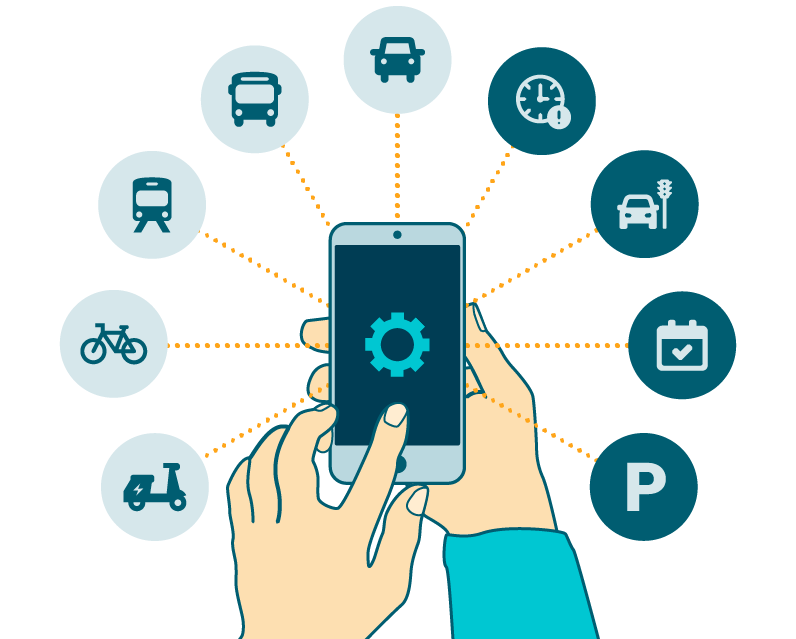Mobility of the Future in Complex Urban Environments
Mobility in cities consists of various modalities and modes of transportation. In addition to cars, motorcycles, pedelecs and electric scooters for motorized individual transport, this also includes buses and trains for local public transport as well as trucks and cargo bikes for delivery. Further modalities such as drones or parcel robots will be added. Most of these modes of transportation will be very intelligent and drive autonomously in the future. Pedals and steering as well as a driver with a driver’s license are then no longer necessary in the vehicle. Communication with other vehicles and the infrastructure (e.g. traffic lights, parking lots, cameras, etc.) enables better coordination and cooperation with one another and thus an increase in safety and efficiency of traffic, especially in complex environments. This approach was researched as part of the DIGINET-PS project on a specially equipped test field in the middle of Berlin and will be further improved in the 5G-MOBIX project.

Typical traffic-related problems in cities such as traffic jams, the search for a parking space, poor air quality and noise can already be reduced through intelligent combination and shared use of means of transport as well as switching to alternative drives. The digitization of mobility offers simplifies their use, increases the reliability of mobility and facilitates the creation of individual and situation-related incentives. In the IMA project, this topic was researched and promoted with the prototype development of an intermodal mobility platform evaluated in Berlin. Autonomous vehicles will be another driver in the future, because their capabilities make them easier to share with other users and to combine with other modes of transportation. Finally, some problems of electromobility can also be overcome with autonomous charging.

